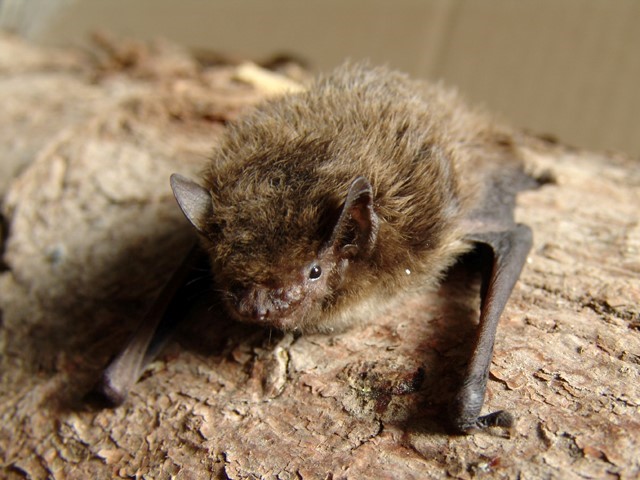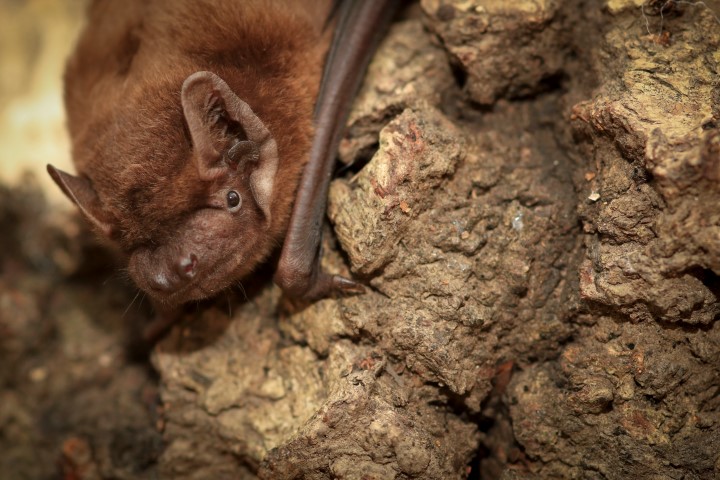I am pretty sure there hasn’t been a single recorded occurrence, at least in Norfolk, of a blind bat becoming entangled in a woman’s hair whilst attempting to suck her blood. Despite this unjustifiable reputation (they can actually see quite well), even an ardent advocate like myself would agree they are not the cutest creatures in the British countryside. Sharp teeth, some very odd looking faces, and leathery broken umbrella wings qualify them as… not very cuddly. However, they are fascinating, many species are exceptionally rare and all are vulnerable, that is why staff at Norfolk Wildlife Trust’s Broadland team are thrilled by this summer’s bat survey results.

Pipistrelle Bat credit Mnolf
The survey work at NWT Ranworth Broad nature reserve covered six evenings during August and September and was conducted by NWT volunteer, Allan Archer as part of the BTO Norfolk Bat Survey. The bats were identified using special ultrasonic echolocation detectors placed at strategic points. All British bat species produce a high-pitched call; the returning echo is picked up by their exceptionally keen hearing. This echolocation method is not only used to avoid trees, buildings and women’s hair, but they can find and even estimate the size of their insect prey. Astonishingly they can even judge the density of objects by echolocation. Each bat species has a unique call, which we measure in kilohertz, producing a sonogram image that is representative of that particular bat species. As an individual bat flies within the detector’s zone a ‘pass’ is reported. Most bats fly for only few hours during the night, normally after dusk and several hours before dawn; sometimes not at all, particularly on wet or windy nights. To have recorded more than twelve thousand ‘passes’ that included ten of the eighteen different species in the UK was exceptional, and a significant increase on previous years.
The survey results included our largest bat, the noctule. It often emerges first, sometimes before dusk; in good light a sharp eye may spot its distinctive ginger fur. The uncommon barbastelle was also recorded, a pug-faced bat with dark fur and large distinctive ears joined by a flap of skin across its head. Several Daubenton’s bats were detected - also known as the water bat - it is found by rivers and lakes and can be observed hunting insects by skimming a few inches above the water. On occasions even picking them off the surface with

Noctule Bat photo by Tom Marshall
their large feet or tail membrane. Also recorded were our three species of pipistrelle - common, soprano and the rare migratory species Nathusius’. The most exciting discovery was NWT’s first record of Leisler’s bat in the Broads. This bat is very rare in the UK with scattered populations in central and southern England, being particularly infrequent in the east. It is a rather fetching creature, also known as the hairy-armed bat, with thick fur around its neck and across the shoulders giving the charming appearance of a little lion’s mane.
All bat species are legally protected; deliberately harming a bat or destroying their roost is a criminal offence. This is necessary as bats are incredibly sensitive to disturbance and many bat ‘roost groups’ stay faithful to a site for decades. Unfortunately, all our bat species have declined in recent decades. This could be for many reasons: habitat loss, modern building design, light pollution, road traffic and lack of larger flying insects.
Norfolk Wildlife Trust has been working hard to reverse this decline by managing our nature reserves in a manner that considers bats’ habitat needs. You too can help by putting up bat boxes in your garden; also leaving an area overgrown, planting wild flowers or creating a garden pond can encourage flying insects. With luck, on a warm summer evening, you could discover the joy of watching bats tumbling in the air above your garden.
Robert Morgan, NWT Assistant Reserves Manager (Broads South)